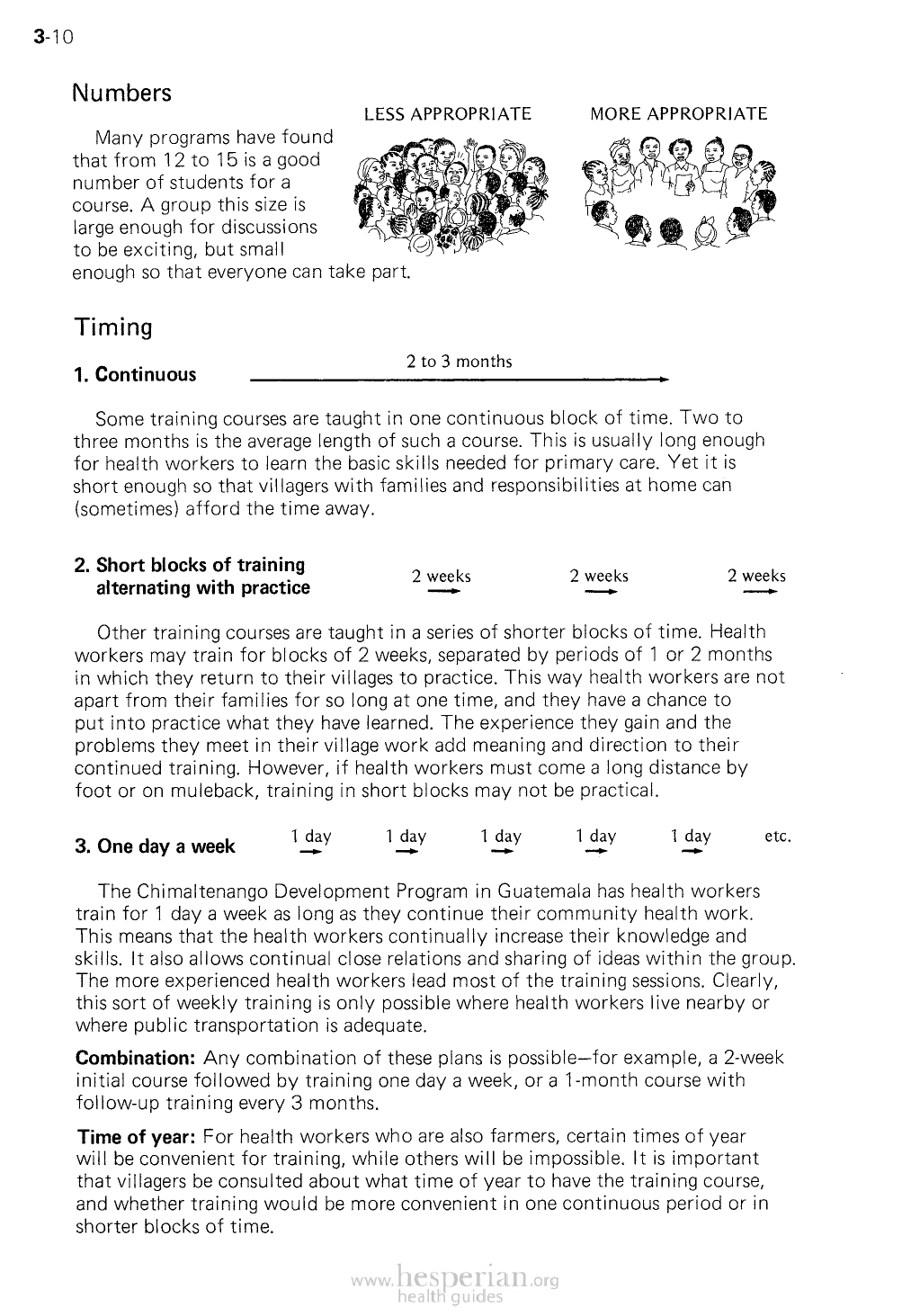
3-10
Numbers
LESS APPROPRIATE
Many programs have found
that from 12 to 15 is a good
number of students for a
course. A group this size is
large enough for discussions
to be exciting, but small
enough so that everyone can take part.
MORE APPROPRIATE
Timing
1. Continuous
2 to 3 months
Some training courses are taught in one continuous block of time. Two to three
months is the average length of such a course. This is usually long enough for
health workers to learn the basic skills needed for primary care. Yet it is short
enough so that villagers with families and responsibilities at home can (sometimes)
afford the time away.
2. Short blocks of training
alternating with practice
2 weeks
2 weeks
2weeks
Other training courses are taught in a series of shorter blocks of time. Health
workers may train for blocks of 2 weeks, separated by periods of 1 or 2 months
in which they return to their villages to practice. This way health workers are not
apart from their families for so long at one time, and they have a chance to put into
practice what they have learned. The experience they gain and the problems they
meet in their village work add meaning and direction to their continued training.
However, if health workers must come a long distance by foot or on muleback,
training in short blocks may not be practical.
3. One day a week
1 day
1 day
1 day
1 day
1 day
etc.
The Chimaltenango Development Program in Guatemala has health workers
train for 1 day a week as long as they continue their community health work. This
means that the health workers continually increase their knowledge and skills. It
also allows continual close relations and sharing of ideas within the group. The
more experienced health workers lead most of the training sessions. Clearly, this
sort of weekly training is only possible where health workers live nearby or where
public transportation is adequate.
Combination: Any combination of these plans is possible—for example, a 2-week
initial course followed by training one day a week, or a 1-month course with follow-up
training every 3 months.
Time of year: For health workers who are also farmers, certain times of year will
be convenient for training, while others will be impossible. It is important that
villagers be consulted about what time of year to have the training course, and
whether training would be more convenient in one continuous period or in shorter
blocks of time.